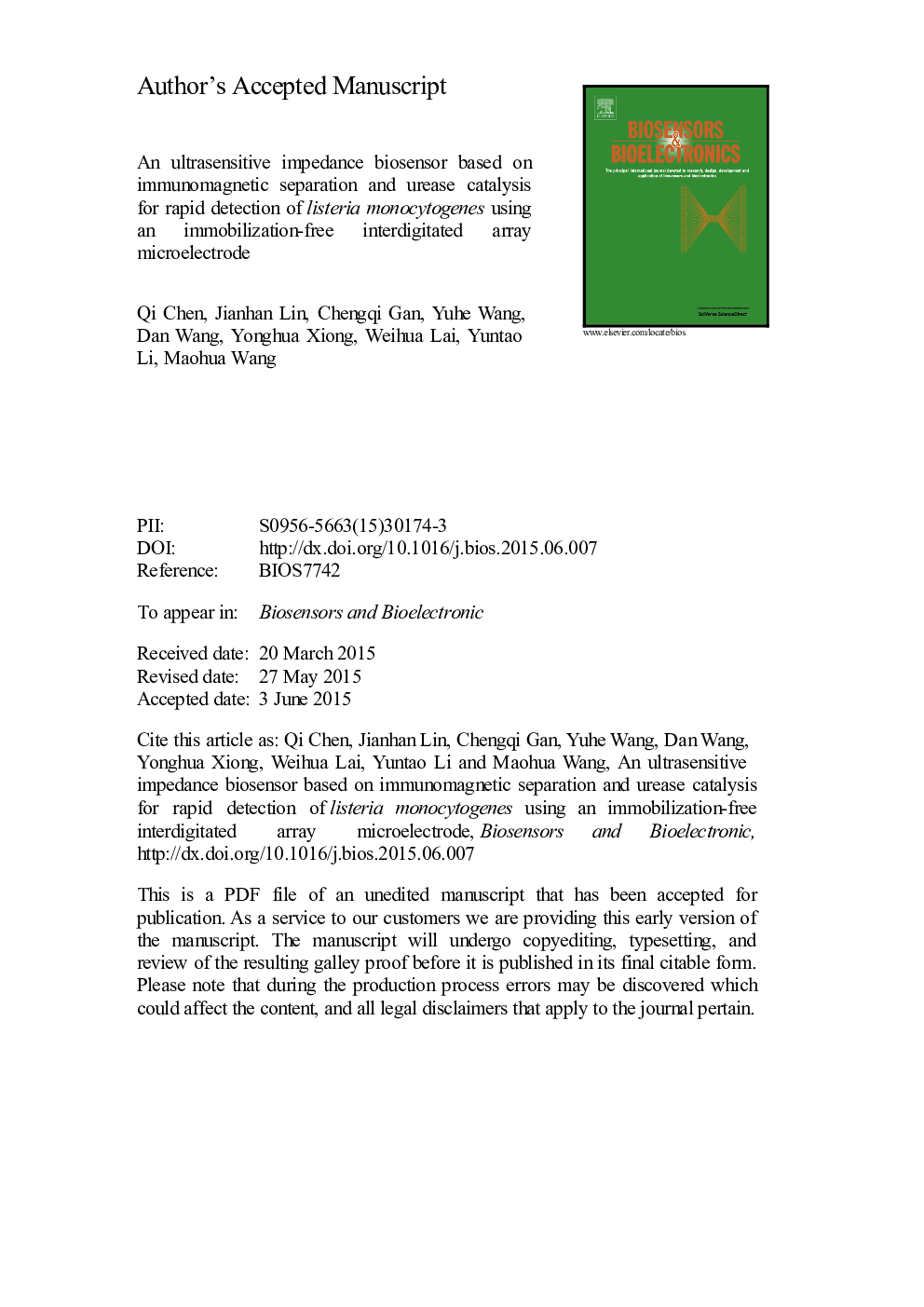| Article ID | Journal | Published Year | Pages | File Type |
|---|---|---|---|---|
| 7231799 | Biosensors and Bioelectronics | 2015 | 34 Pages |
Abstract
In this study, we described a novel impedance biosensor combining immunomagnetic separation with urease catalysis for sensitive detection of foodborne bacteria using Listeria monocytogenes as model and an immobilization-free microelectrode as detector. The monoclonal antibodies (MAbs) were immobilized on the surface of the magnetic nanoparticles (MNPs) with the diameter of 180Â nm by biotin-streptavidin system for specifically and efficiently separating Listeria cells from sample background. The polyclonal antibodies (PAbs) and the urease were modified onto the surface of the gold nanoparticles (AuNPs) with the diameter of 20Â nm and the modified AuNPs were used to react with Listera to form the MNP-MAb-Listeria-PAb-AuNP-urease sandwich complexes. The urease in the complexes could catalyze the hydrolysis of the urea into ammonium carbonate and this led to an increase in the ionic strength of the media, which could be detected by the microelectrode. The magnetic separation efficiencies for L. monocytogenes at the concentrations ranging from 3.0Ã101 to 3.0Ã104Â CFU/mL were over 95% for the pure cultures and over 85% for the spiked lettuce samples. The lower detection limit of this biosensor for L. monocytogenes was found to be 300Â CFU/mL in both the pure cultures and the spiked lettuce samples. The microelectrode was demonstrated to be reusable for over 50 times with thorough cleaning by deionized water. This biosensor showed its potential to provide a simple, low-cost and sensitive method for rapid screening of foodborne pathogens and could be extended for detection of other biological or chemical targets.
Related Topics
Physical Sciences and Engineering
Chemistry
Analytical Chemistry
Authors
Qi Chen, Jianhan Lin, Chengqi Gan, Yuhe Wang, Dan Wang, Yonghua Xiong, Weihua Lai, Yuntao Li, Maohua Wang,
